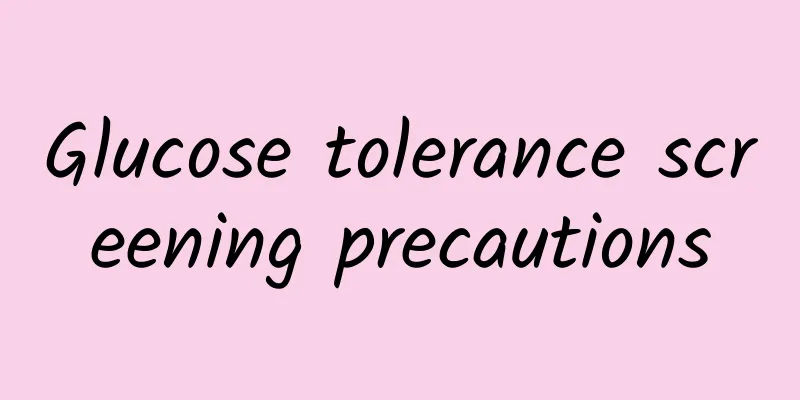My ears are throbbing and hurting, what's going on?

|
If your ears are throbbing with pain, you should be alert to whether it is caused by trigeminal neuralgia. We know that trigeminal neuralgia is a more serious symptom of neuralgia, and the pain is quite severe. Therefore, if such symptoms occur, it is best to go to the ENT department of a tertiary hospital for further examination. If it is neuralgia, in addition to medication, it can also be treated with surgery. Drug treatment 1. Carbamazepine: It is effective in relieving pain in 70% of patients, but about 1/3 of patients cannot tolerate its side effects such as drowsiness, dizziness, and gastrointestinal discomfort. Start with 2 times a day, then 3 times a day. Take 0.2-0.6g per day, divided into 2-3 times. The maximum daily dose is 1.2g. 2. Sodium phenytoin: Its efficacy is not as good as carbamazepine. 3. Traditional Chinese medicine treatment: has certain therapeutic effect. Surgery 1. Trigeminal nerve and semilunar ganglion blockade In 1903, Schosser was the first to use trigeminal nerve peripheral branch blockade to treat trigeminal neuralgia. The surgery uses injected drugs that act directly on the trigeminal nerve, causing it to degenerate and create conduction block, thereby relieving pain. Commonly used blocking drugs are anhydrous alcohol and glycerin. Peripheral branch blockade is simple to operate, but the therapeutic effect is not long-lasting, generally lasting for 3-8 months and rarely exceeding 1 year. The operation of semilunar ganglion closure is relatively complicated and may cause complications such as neurokeratitis. The overall effective rate is 72-99%, the early recurrence rate is 20%, and the recurrence rate in 5-10 years is 50%. 2. Percutaneous radiofrequency thermocoagulation treatment of the semilunar ganglion is a safe, simple and patient-acceptable treatment method with an efficacy of up to 90%. The theoretical basis is that the pain fibers in the trigeminal nerve can be selectively destroyed while preserving the tactile fibers. The method is to insert the radiofrequency needle electrode into the semilunar ganglion under the guidance of X-ray or CT, gradually heat it to 65-75 degrees after power is turned on, and destroy the target point for 60 seconds. This method is suitable for patients who are unable or refuse craniotomy due to advanced age. 3. Microvascular decompression (MVD) MVD surgery is currently the surgical treatment of choice for primary trigeminal neuralgia. First proposed by Professor Jannetta in 1967, surgical indications include: those whose trigeminal nerve is compressed by blood vessels confirmed by imaging examinations; those who are willing to undergo surgery when other treatments have poor results; and the blood vessels that compress the trigeminal nerve and cause pain are called "responsible vessels." Prevention and daily maintenance 1. Eat regularly and choose soft, easy-to-chew foods. Patients who experience pain due to chewing should eat liquid food, and must not eat fried food. They should avoid eating irritating food, overly sour or sweet food, or cold food. The diet should be nutritious, and they should eat more foods rich in vitamins and those that have the effect of clearing heat and detoxifying. They should eat more fresh fruits, vegetables and soy products, eat less fat and more lean meat, and light food is preferred. 2. Be gentle when eating, rinsing your mouth, talking, brushing your teeth, and washing your face. So as to avoid triggering the trigger point and causing trigeminal neuralgia. Do not eat irritating foods such as onions. 3. Pay attention to keeping the head and face warm, avoid local freezing and moisture, and do not wash your face with too cold or too hot water; you should keep your emotions stable at ordinary times, not get excited, not get tired and stay up late, often listen to soft music, keep a calm mood, and get enough sleep. 4. Keep a happy spirit and avoid mental stimulation; try to avoid touching "trigger points"; maintain a regular living routine, and the indoor environment should be quiet, clean and have fresh air. At the same time, the bedroom is protected from wind and cold. Participate in sports appropriately, exercise and enhance your physical fitness. |
<<: What to do if the wound turns red after healing
>>: What to do if the right side of the brain is throbbing with pain
Recommend
What medicine to take for enteritis during lactation
The lactation period is the time when a woman has...
Breast pain after 10 days of delayed menstruation
Women's menstruation is regular every month, ...
The efficacy and action points of licorice
What are the effects and functions of moxibustion...
What causes intermittent stabbing pain in women's chest?
Breasts are very important to women. They are not...
Will fetal movement decrease when pregnant women are tired?
Pregnant women will experience many changes in th...
Wolfberry treats impotence and makes you "hard"
Wolfberry is a traditional Chinese medicine and i...
What are the benefits of American ginseng
American ginseng is a common health product in ou...
What does a chest puncture check?
Chest puncture is also a common examination metho...
What are the benefits of soaking your feet in mugwort leaves for women?
Mugwort is also known as the wormwood. As we all ...
Caesarean section 76 days still lochia
As we all know, normal women will produce lochia ...
I fell and my neck hurts like a stiff neck
The neck is a very fragile part of the human body...
What are the prescriptions for external application of Chinese medicine for fever?
When there is pain in the lumbar spine or joints,...
How long does it take for the eyelid to retract?
Now that technology is advanced and plastic surge...
Medicinal value of white cardamom
As modern society becomes more and more developed...
Nipple discharge during pregnancy
During pregnancy, some pregnant women will have l...









